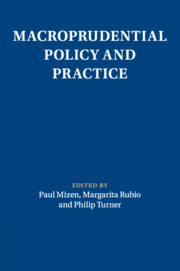Taming the Cycles of Finance?
Macroprudential regulation is a set of economic and policy tools that aim to mitigate risk in the financial and banking systems. It was largely developed in response to the financial crisis of 2007-08, turning central banks into de facto financial policemen. Taming the Cycles of Finance traces the post-crisis rise of macroprudential regulation and argues that, despite its original aims, it typically supports finance in times of crisis but fails to curb it in times of booms. Investigating how different macroprudential frameworks developed in the UK, the USA and the Eurozone, the book explains how central bank economists went about building early warning systems to identify fragilities in the financial system. It then shows how administrative and political constraints limited the effects of this shift, as central banks were wary of intervening in a discretionary manner and policymakers were opposed to measures to limit credit growth.
- Introduces the reader to the main changes the macroprudential shift in financial regulation
- Provides a multi-dimensional and interdisciplinary analysis of fragmented regulatory change, involving STS studies of regulatory science, sociology of economics as well as political economy of financial regulation
- Allows the reader to appreciate the importance of the new backstop facilities of central banks for the shadow banking system, installed to limit financial instability
Reviews & endorsements
‘By building a political-economic narrative that is empirically authoritative, well written, superimposed on successive events, and linked to policy responses in a world of big stakes and powerful interests, the author has made a welcome contribution. … Highly recommended.’ I. Walter, Choice
‘The book is a treasure trove of information about a major shift in regulatory policy that is often mentioned in the scholarly literature on central banking but rarely examined in any depth.’ Leah Rose Downey, Perspectives on Politics
Product details
February 2024Hardback
9781009233132
352 pages
235 × 158 × 25 mm
0.65kg
Available
Table of Contents
- 1. Introduction
- 2. The changing regulation of finance after the crisis: state of the art and beyond
- 3. The evolution of systemic risk thinking pre-crisis: an expert network in the making
- 4. The selective rise of macro-prudential ideas in the wake of the crisis
- 5. Is resilience enough? the implementation of the macro-prudential reform agenda in the US, the UK and the Euro-zone
- 6. From the global to the local: enacting the counter-cyclical capital buffer through the creation of early warning systems
- 7. Taming liquidity and leverage in the shadow banking sector
- 8. Into the upswing
- 9. The crisis that wasn't: the covid crisis and its regulatory implications
- 10. Conclusion: the asymmetric application of financial stability concerns.






